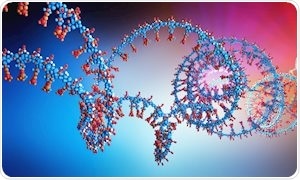For the first time, scientists from the Hebrew University of Jerusalem, Radboudumc, Maastricht UMC+, and international collaborators have gained a better understanding of the “hidden genetic defects” of the general population in Europe.

Image Credit: Radboud University Medical Center.
This finding is significant because such defects, if inherited from both sets of parents, can cause different types of illnesses in their kids. According to a study performed on the Estonian and Dutch populations, two to four of these hidden genetic defects are found in every person.
In 1 out of every 100 couples, this creates an increased risk of a genetic disorder for future children. In the case of consanguinity, as much as 20% of the couples seem to be at increased risk. The study results have been published in The American Journal of Human Genetics and also in the Genetics in Medicine journal.
In every individual, the genes are half paternal and half maternal. As a result, a person has two copies of each gene. At times, one of those two copies is impaired, without making the person sick because the other gene continues to function normally.
In such a case, it is referred to as a “hidden genetic defect” (or an autosomal recessive gene, in scientific terms). If a child inherits the same hidden genetic defect, that is, the same mutated gene, from both sets of parents, this hidden genetic defect can lead to problems.
In this case, both father and mother are healthy and have never been affected by the hidden genetic defect. However, when the two hidden genetic defects (paternal and maternal) appear together in the kid, the disease will manifest itself.
Hidden defects in sight
Scientists are uncertain how often these hidden genetic defects manifest in the general population. Now, a team of research from Radboudumc and Maastricht UMC+ has screened all the genes of almost 6,500 individuals in the Estonian and Dutch population and gained a better understanding of how often these hidden genetic defects, which promotes the disease, are present in a single person.
Every human being appears to have on average 2 to 4 such hidden genetic defects. Therefore the chance that a European couple is at risk of having a sick child due to two such defects is about 1 percent. The risk increases sharply in consanguineous couples. In a relationship of cousins, about sixteen percent of the couples are at high risk, with a particularly increased risks for skeletal disorders or intellectual disabilities.”
Christian Gilissen, Researcher, Radboud University Medical Center
Higher risk with consanguinity
Apart from this study, analyses were performed in the hospital’s clinical practice, managed by Maastricht UMC+ and in collaboration with Radboudumc and Amsterdam UMC. The new study also deals with the concern of risk determination of hidden genetic defects in cousin relationships before a desired pregnancy.
We mapped the risk in 100 consanguineous couples. About 20 percent of these couples were found to have an increased risk of serious disorders in their offspring through these hidden genetic defects. These results from clinical practice confirm the data already found in the population study mentioned above.”
Aimee Paulussen, Clinical Molecular Geneticist, Maastricht UMC+
Valuable testing
Both studies involved Professor Han Brunner, head of the Department of Clinical Genetics in Maastricht and also the Department of Genetics in Nijmegen. According to Professor Brunner, these studies are a clear incentive to make genetic testing accessible to couples who may have an elevated risk because of these hidden genetic defects.
Certainly, for these couples, this information can help them to make an informed decision when starting a family. They can consider pre-implantation diagnostics and IVF to allow selection of embryos without these defects.”
Han Brunner, Professor and Head, Department of Clinical Genetics, Maastricht UMC+
Source:
Journal reference:
Fridman, H., et al. (2021) The landscape of autosomal-recessive pathogenic variants in European populations reveals phenotype-specific effects. The American Journal of Human Genetics. doi.org/10.1016/j.ajhg.2021.03.004.